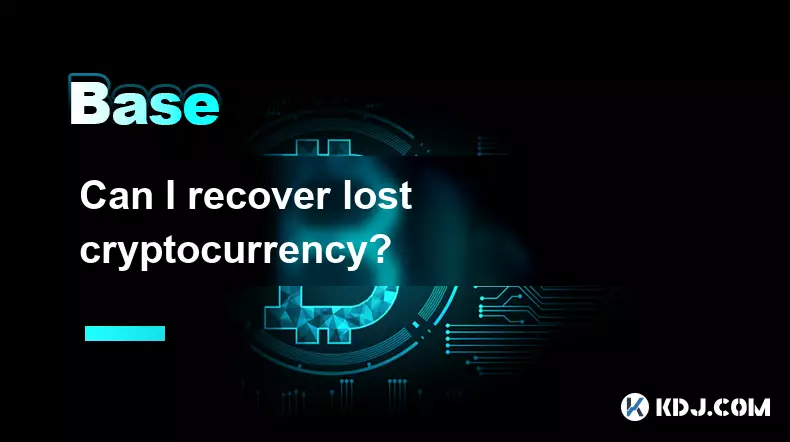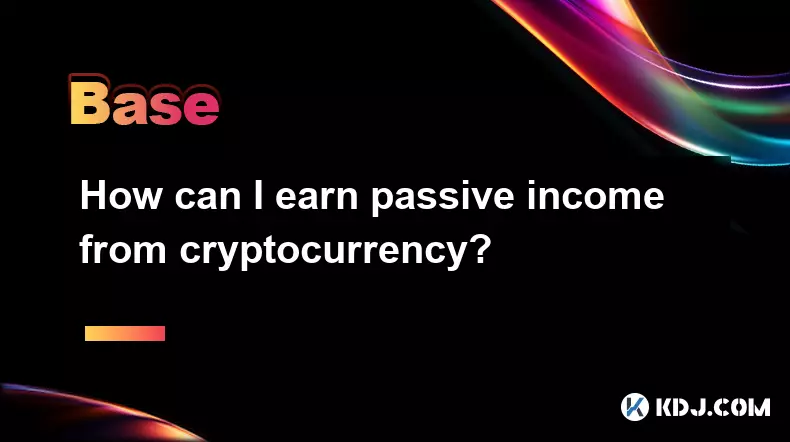-
 bitcoin
bitcoin $109523.663807 USD
-0.13% -
 ethereum
ethereum $4019.526508 USD
2.06% -
 tether
tether $1.000482 USD
0.00% -
 xrp
xrp $2.776815 USD
0.18% -
 bnb
bnb $958.942396 USD
0.12% -
 solana
solana $204.294698 USD
3.84% -
 usd-coin
usd-coin $0.999693 USD
0.00% -
 dogecoin
dogecoin $0.232115 USD
2.09% -
 tron
tron $0.338028 USD
0.84% -
 cardano
cardano $0.790920 USD
1.50% -
 hyperliquid
hyperliquid $44.871443 USD
5.60% -
 ethena-usde
ethena-usde $1.000322 USD
0.04% -
 chainlink
chainlink $21.034165 USD
2.60% -
 avalanche
avalanche $28.794831 USD
-0.54% -
 stellar
stellar $0.360466 USD
1.24%
What is GameFi (gamified finance)?
GameFi merges blockchain gaming with DeFi, letting players earn crypto and NFTs through play-to-earn models, where assets are truly owned and tradable.
Sep 21, 2025 at 11:37 am

What Is GameFi and How Does It Work?
1. GameFi, short for gamified finance, is a fusion of blockchain gaming and decentralized financial mechanisms. It introduces economic models into video games where players can earn cryptocurrency or NFTs by completing tasks, winning battles, or progressing through levels.
2. Unlike traditional games where in-game assets are owned by developers, GameFi leverages blockchain technology to ensure true ownership. Players hold their digital items as NFTs, which can be traded, sold, or used across platforms.
3. The core mechanism behind GameFi often follows a 'play-to-earn' (P2E) model. Users invest time or capital—such as purchasing a character or land—and receive rewards in the form of tokens that have real-world value.
4. These tokens typically serve dual purposes: they function as in-game currencies and also grant governance rights within the project’s ecosystem. Token holders may vote on upgrades, rule changes, or treasury allocations.
5. Smart contracts automate reward distribution, asset transfers, and game logic, ensuring transparency and reducing reliance on centralized authorities. This trustless infrastructure is fundamental to how GameFi operates on networks like Ethereum, Binance Smart Chain, or Polygon.
The Role of Tokens and NFTs in GameFi
1. In GameFi ecosystems, two primary digital assets dominate: utility tokens and non-fungible tokens (NFTs). Utility tokens are fungible cryptocurrencies used for transactions, staking, or earning yield within the game environment.
2. NFTs represent unique in-game items such as characters, weapons, skins, or virtual real estate. Each NFT contains metadata that verifies its authenticity, scarcity, and ownership history on-chain.
3. Players can acquire NFTs through gameplay achievements, marketplace purchases, or initial sales conducted by the development team. Once obtained, these assets remain under the player's control via their crypto wallet.
4. The interoperability of NFTs allows them to be utilized across multiple games or DeFi protocols. For example, a sword from one game might be lent out on a peer-to-peer rental platform to generate passive income.
5. Some GameFi projects implement token burning mechanisms to maintain scarcity and counter inflation. When players upgrade equipment or exit the game, certain tokens or NFTs are permanently removed from circulation.
Popular GameFi Projects and Their Economic Models
1. Axie Infinity was among the first major GameFi successes, popularizing the P2E model during 2020–2021. Players breed, battle, and trade Axies—digital creatures represented as NFTs—while earning Smooth Love Potion (SLP) and AXS tokens.
2. The Sandbox offers a metaverse experience where users create, own, and monetize gaming experiences on virtual land parcels. LAND NFTs act as digital real estate, enabling creators to build interactive environments and host events.
3. Illuvium combines open-world exploration with auto-battler mechanics, set on a sci-fi planet rich with rare creatures called Illuvials. Its native token, ILV, fuels governance and incentivizes participation across different game modes.
4. Gods Unchained is a competitive card game where each card is an NFT. Players build decks and compete in tournaments, with high-rarity cards fetching significant prices on secondary markets.
5. These projects integrate liquidity pools, staking farms, and yield-generating opportunities directly into gameplay. Users stake tokens to earn more tokens, creating complex financial layers beneath the surface of entertainment.
Risks and Challenges Facing GameFi Adoption
1. Many GameFi platforms face sustainability issues due to inflationary tokenomics. If reward outputs exceed organic demand, token prices collapse, discouraging new entrants and causing early adopters to exit.
2. Entry barriers remain high in several games requiring upfront investments in NFTs. This pay-to-play structure limits accessibility and contradicts the inclusive ideals promoted by decentralization.
3. Regulatory scrutiny is increasing as governments assess whether GameFi tokens qualify as securities. Legal uncertainty could lead to delistings, fines, or operational restrictions in key markets.
4. Security vulnerabilities persist despite smart contract audits. Exploits targeting bridges, wallets, or game contracts have resulted in multimillion-dollar losses across various platforms.
5. User experience challenges include wallet integration friction, gas fee volatility, and steep learning curves for non-crypto natives. Poor onboarding processes hinder mass adoption beyond niche communities.
Frequently Asked Questions
How do players earn money in GameFi games?Players earn through completing objectives that reward cryptocurrency or NFTs. These assets can be sold on exchanges or marketplaces for fiat or other digital currencies. Staking, lending, or participating in governance also generates returns.
Are all GameFi games based on play-to-earn?No, while many follow the P2E model, newer iterations explore play-and-earn, where enjoyment precedes profit, or move-to-earn formats that track physical activity. The industry is diversifying beyond pure monetization.
Can GameFi tokens be traded on exchanges?Yes, most native GameFi tokens are listed on centralized and decentralized exchanges. Trading availability depends on the project’s reach, community size, and compliance with exchange listing requirements.
What happens if a GameFi project shuts down?If a game ceases operations, the underlying blockchain assets may still exist, but functionality depends on continued support. NFTs might retain value based on rarity or collector interest, even without active gameplay.
Disclaimer:info@kdj.com
The information provided is not trading advice. kdj.com does not assume any responsibility for any investments made based on the information provided in this article. Cryptocurrencies are highly volatile and it is highly recommended that you invest with caution after thorough research!
If you believe that the content used on this website infringes your copyright, please contact us immediately (info@kdj.com) and we will delete it promptly.
- BlockchainFX: The Crypto Presale Primed for a 2025 ROI Explosion
- 2025-09-27 18:25:19
- ETH Price Check: Smart Money Stays Cool Amidst ATH Rollercoaster
- 2025-09-27 18:25:19
- Aster Price, MrBeast, and DEX Volumes: What's the Buzz?
- 2025-09-27 18:45:11
- Shiba Inu, Meme Coins, and MAGACOIN FINANCE: What's Next?
- 2025-09-27 18:45:11
- Aster DEX: Navigating DeFi's Future with Price Predictions and Key Insights
- 2025-09-27 18:50:01
- Virtuals Protocol's New Genesis: A Deep Dive into the Launch and $VIRTUAL's Potential
- 2025-09-27 18:50:01
Related knowledge

What are some common methods of cryptocurrency market manipulation?
Sep 27,2025 at 02:55am
Wash Trading and Its Impact on Market Perception1. Wash trading involves an individual or entity simultaneously buying and selling the same cryptocurr...

How do I read a cryptocurrency whitepaper?
Sep 27,2025 at 05:54am
Understanding the Structure of a Cryptocurrency Whitepaper1. Begin by identifying the executive summary, which outlines the project’s core vision and ...

Can I recover lost cryptocurrency?
Sep 25,2025 at 08:18am
Understanding the Nature of Cryptocurrency Loss1. Cryptocurrency operates on decentralized networks, meaning there is no central authority to reverse ...

How do I choose a cryptocurrency investment strategy?
Sep 27,2025 at 03:55pm
Understanding Risk Tolerance in Crypto Investing1. Assessing personal risk tolerance is a foundational step when entering the cryptocurrency market. V...

How can I earn passive income from cryptocurrency?
Sep 23,2025 at 10:18am
Staking Cryptocurrencies for Regular Returns1. Many blockchain networks operate on a proof-of-stake (PoS) consensus mechanism, allowing users to earn ...

What are gas fees in cryptocurrency transactions?
Sep 26,2025 at 02:00am
Understanding Gas Fees in Blockchain Transactions1. Gas fees are payments made by users to compensate for the computing energy required to process and...

What are some common methods of cryptocurrency market manipulation?
Sep 27,2025 at 02:55am
Wash Trading and Its Impact on Market Perception1. Wash trading involves an individual or entity simultaneously buying and selling the same cryptocurr...

How do I read a cryptocurrency whitepaper?
Sep 27,2025 at 05:54am
Understanding the Structure of a Cryptocurrency Whitepaper1. Begin by identifying the executive summary, which outlines the project’s core vision and ...

Can I recover lost cryptocurrency?
Sep 25,2025 at 08:18am
Understanding the Nature of Cryptocurrency Loss1. Cryptocurrency operates on decentralized networks, meaning there is no central authority to reverse ...

How do I choose a cryptocurrency investment strategy?
Sep 27,2025 at 03:55pm
Understanding Risk Tolerance in Crypto Investing1. Assessing personal risk tolerance is a foundational step when entering the cryptocurrency market. V...

How can I earn passive income from cryptocurrency?
Sep 23,2025 at 10:18am
Staking Cryptocurrencies for Regular Returns1. Many blockchain networks operate on a proof-of-stake (PoS) consensus mechanism, allowing users to earn ...

What are gas fees in cryptocurrency transactions?
Sep 26,2025 at 02:00am
Understanding Gas Fees in Blockchain Transactions1. Gas fees are payments made by users to compensate for the computing energy required to process and...
See all articles









































































